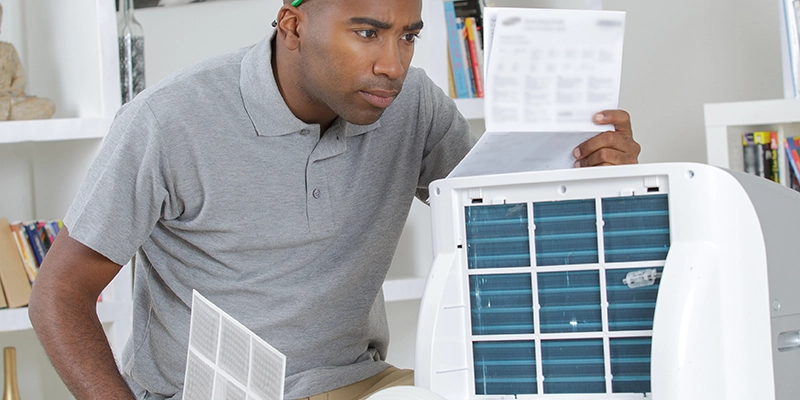
Aire Serv explains that HEPA air filters are highly efficient at trapping airborne particles, improving indoor air quality.
- HEPA filters capture 99.97% of particles 0.3 microns or larger
- They use dense fiber mats to trap contaminants
- Commonly used in homes, hospitals, and clean rooms
- Require regular replacement for optimal performance
For those who suffer from allergies or asthma, or concerned about the air quality in their home, a HEPA air filter can make a dramatic difference, reducing airborne contaminants and safeguarding indoor air quality. Is a HEPA air filter right for you? Learn more from Aire Serv.
What is a HEPA Filter?
High-efficiency particulate air (HEPA) filters are very effective at removing contaminants in the air. True HEPA filters remove 99.97% (or more) of air particulates, from larger particles to those just 0.3-microns in size. How big is a micron? Smoke is ½-micron, bacteria 2-3-microns, mold/pollen 10-30-microns, and human hair 60-100-microns in size.
How do HEPA Filters Work?
Originally used in the nuclear industry to remove dangerous, radioactive particles, HEPA filters remove contaminants 3 ways: Particles that crash into the filter are absorbed by impact, or trapped by interception/sieving as they drift in the airstream, becoming trapped by fibers. At lowers speeds, they can also be trapped by diffusion as particles crash into each other and are pushed into the filter.
What Can A HEPA Filter Do that Others Can’t?
HEPA filters can remove airborne particles of dust, mold, odors, pollen, viruses, bacteria and other particulates that everyday fiberglass and pleated filters can miss. This improves overall air quality in the home and may help reduce allergy and asthma symptoms.
Beware the Doppelganger
True HEPA filters must pass a strict test to meet qualifications and earn the HEPA label. Beware of filters labeled “HEPA-style” or “HEPA-type…” This can mean anything. Just because a filter is made with ‘HEPA filter media’ does not it means HEPA efficiency requirements. Choosing a filter that meets recognized HEPA industry standards ensures filter integrity and performance. True HEPA filters meet these specific standards, falling in the MERV 17-19 range.
Who’s MERV?
MERV stands for Minimum Efficiency Reporting Value. MERV ratings are used to rate a filter’s ability to purify the air and the size of substances it can remove. Some companies use different rating systems, but MERV is the approved industry standard. The higher the number, the more impressive a filter’s filtering capacity. True HEPA filters have a MERVE rating between 17-19, removing 99.97-99.999% of particles 0.3-micron and larger. Not friendly with MERV ratings yet? Here’s a breakdown:
- MERV 1-4: These inexpensive filters remove only larger particles over 10-microns in size. They keep the big stuff out of HVAC system components, but do very little to improve air quality and usually don’t advertise MERV ratings on packaging.
- MERV 5-8: Remove particles 3.0-microns and larger, such as mold, pollen, and some bacteria.
- MERV 9-12: Remove particles down to 1.0-micron. Good for dust control but require frequent replacement to safeguard system efficiency.
- MERV 13-16: Highest-quality non-HEPA filter, removing particles as small as 0.3-microns.
- MERV 17-20: True HEPA filters remove 99.97%+ of airborne particles 0.3-micron and larger. Due to airflow resistance, they require system modification for use in HVAC systems.
Expect to Pay More for Better Performance
As with all things, with air filters, you get what you pay for. Expect to pay more for HEPA filters that remove more contaminants and last longer than cheap, fiberglass home improvement store filters which do far less to reduce airborne contaminants. Unlike inexpensive fiberglass and pleated filters that require replacement every 1-3 months, expect to replace HEPA filters every 6-12-months depending on your filter type and home lifestyle habits (kids, pets, construction).
Interested in inviting HEPA filtration into your home? Contact Aire Serv® today.

